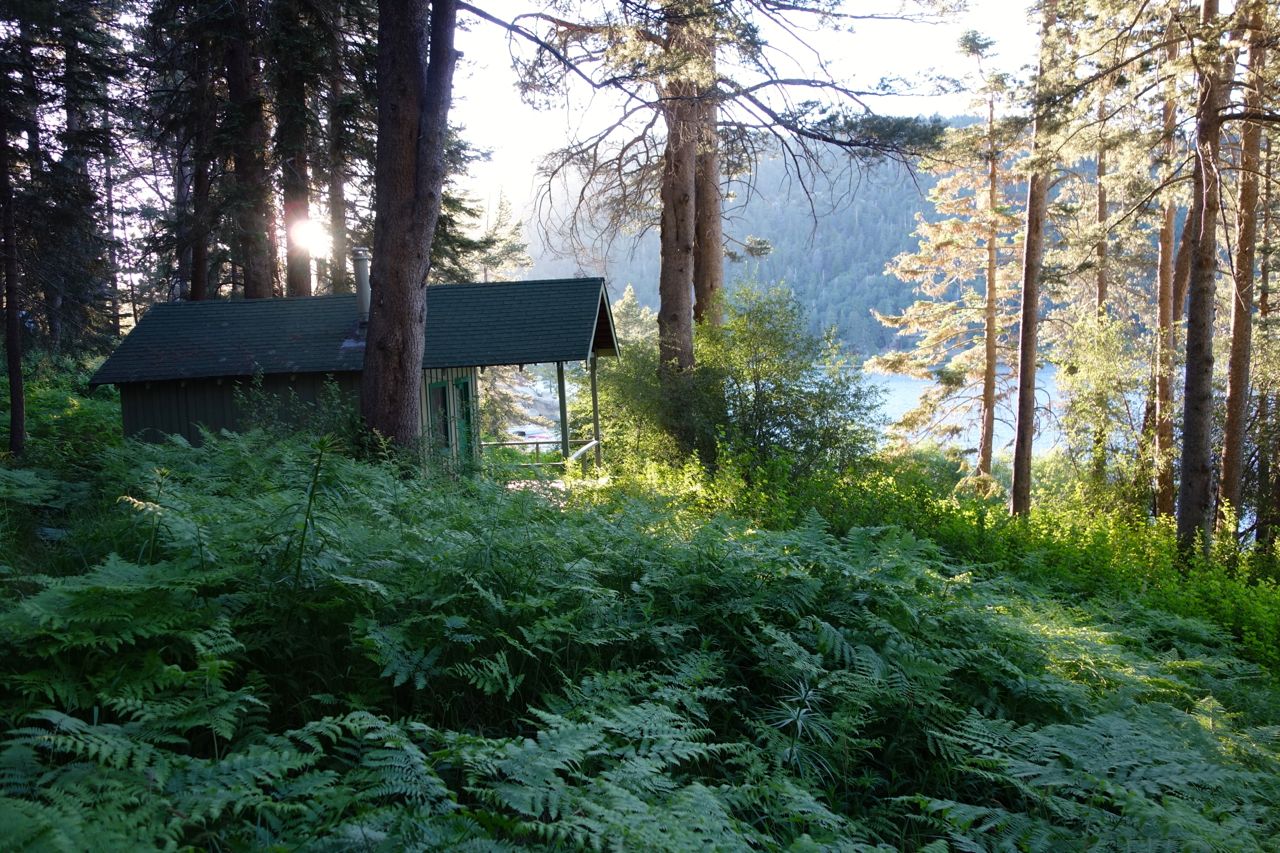As you have probably heard, there has been at least one black bear (they actually may be red, brown or black in color) foraging around our cabins this summer, and the drought may attract others from the high country down to the lake. The recent bear representative visiting the area is probably a juvenile (only about 150-170 lbs), who has not yet established a territory. Our quick research reveals the following information:
The San Bernardino Mountains were California grizzly bear territory until that species was exterminated by man in the early 1900's. Black bears were first introduced to these mountains in the 1930's when "problem bears" from Yosemite Park were relocated here. There is now a stable, permanent population of descendants of those Yosemite bears, living in the forests of Big Bear. These bears become quite large (500 lbs.), are a protected species, have great predatory powers and speed, and like to eat meat as well as plants -- but they do not, we are pleased to report, hunt human prey or normally pose a threat to humans. Very shy of humans, they enter settled areas to find garbage and other food that they associate with human habitation. They can be very dangerous, however, particularly in the following circumstances:
- If the bear loses its natural shyness by too much human contact and by being fed by humans, it is likely to associate cabins with food, and may break into cabins or otherwise become aggressive with humans. This human-induced bear misbehavior will result in Fish and Game wardens eventually killing the nuisance bear to protect the offending humans – an unfair but common result;
- If the bear, based on its extraordinarily keen sense of smell (which can extend for miles), mistakes you for prepared food because of food odors on you or your clothing (e.g., some campers have been mauled while sleeping outside after handling food and/or wearing clothing which was worn while cooking);
- If the bear and your dog have a hostile confrontation, the bear easily may kill the dog, or may chase the dog, and the dog may thus lead the angry bear back to your cabin, at which time your animal-management skills will be severely tested. Best not to permit your dog to wander;
- If the bear is surprised or scared by your unexpected presence, particularly if it feels cornered. You should make noises when you are hiking, so that bears can avoid you;
- If a mother bear thinks that you may be bothering her cub in any way, or coming between her and her cub, she will become aroused and aggressive. Young bears, cute as they may be, therefore pose a special danger to humans and are to be avoided, because there is usually a cranky and protective mother bear nearby; and
- If, upon encountering a bear, you make sudden movements or turn and run, you may trigger an aggressive “chase” response by the bear. If possible, back away slowly, at the same time taking care not to come nearer to a cub or between a bear and its cub. Depending on the circumstances, making loud noises such as clanging metal plates may scare off the bear.
The paramount rule for peaceful co-existence with bears is "do not to feed them in any way." Do not leave food (including bird seed) or garbage in a place where it may attract bear attention or entry. Do not throw or bury garbage outside the cabin, and do not store it outside, even in closed trash cans. And do not rely upon screen doors to deter bear entry to garbage or exposed food.
Considerations similar to the above also apply to bobcats and other large predators, who may also occasionally visit the SW Shore Colony in search of water and food.
Submitted by Dick Fisher, based on a previous Southwest Shore advisory notice dated September 10, 1996.






